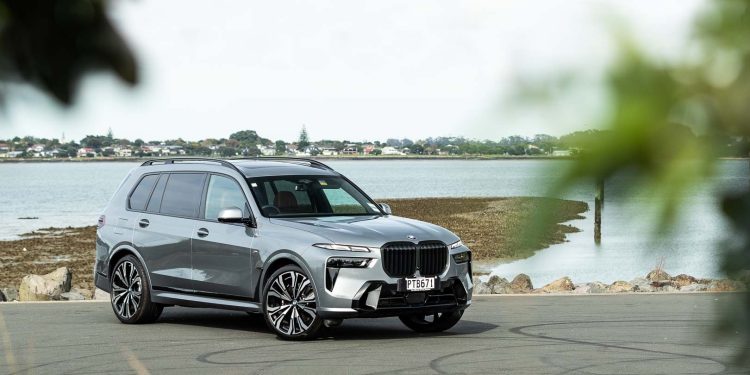2023 BMW X7 xDrive40D review
Words: Kyle Cassidy | Photos: Isaac Western
The X7 is BMW’s largest offering. It’s been through the firm’s Life Cycle Impulse process, marketing speak for a facelift. Has it made this a better luxo bus?
It’s not surprising that since BMW introduced its big X7, it has gone on to be its ‘most successful model in the luxury class’. Everybody wants to ride up high and mighty, doubly so in the upper echelons of luxury.
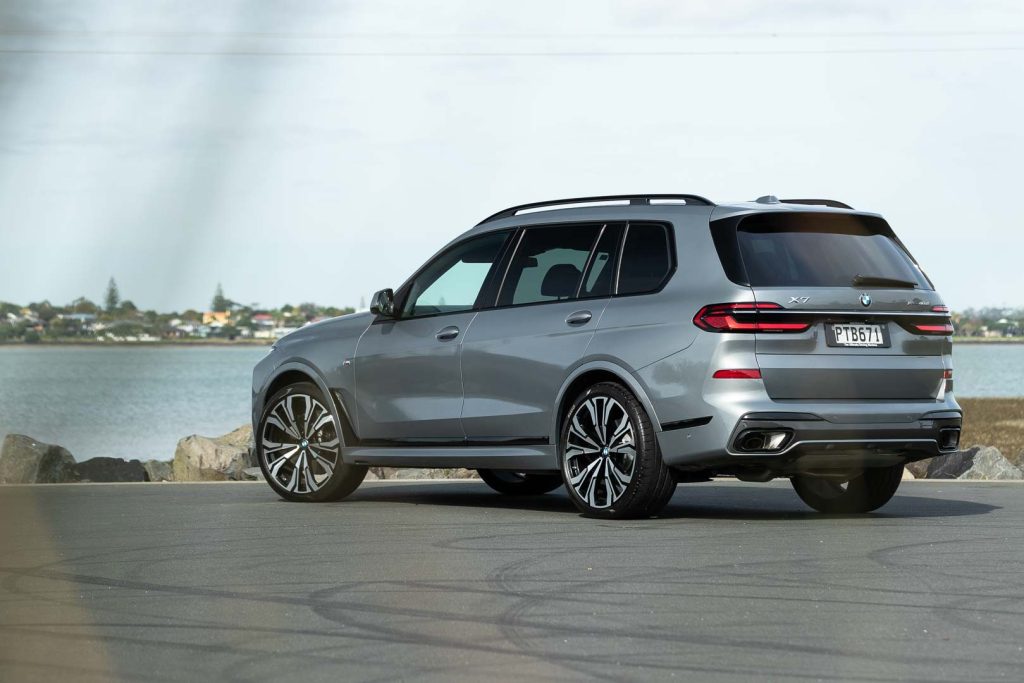
This outsells the 7 Series in most markets but then it’s bigger, blingier and yet slightly more attainable.
The latest model has been ‘honed to significant effect’ they tell us, with a rearranged front end, added gadgetry and specification, while the engine department receives 48-volt mild hybrid tech.
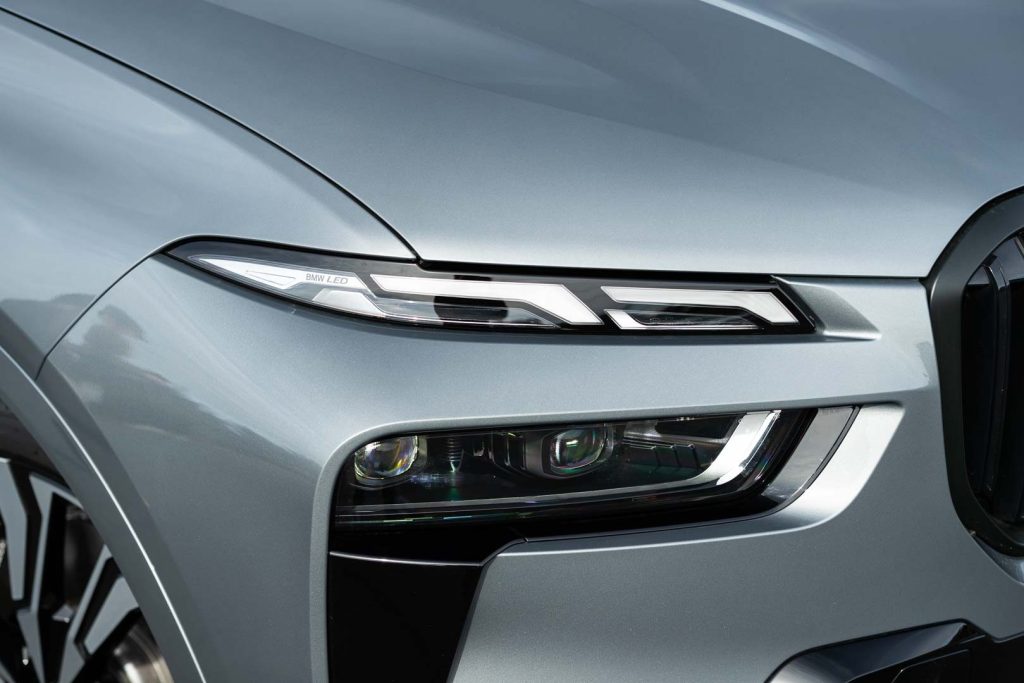
What’s new about the updated BMW X7?
The front end adopts a more upright, emboldened look with a larger kidney grille (which is now lit up at night with an ‘iconic glow’) and new piercing peepers (LED with adaptive light distribution as standard).
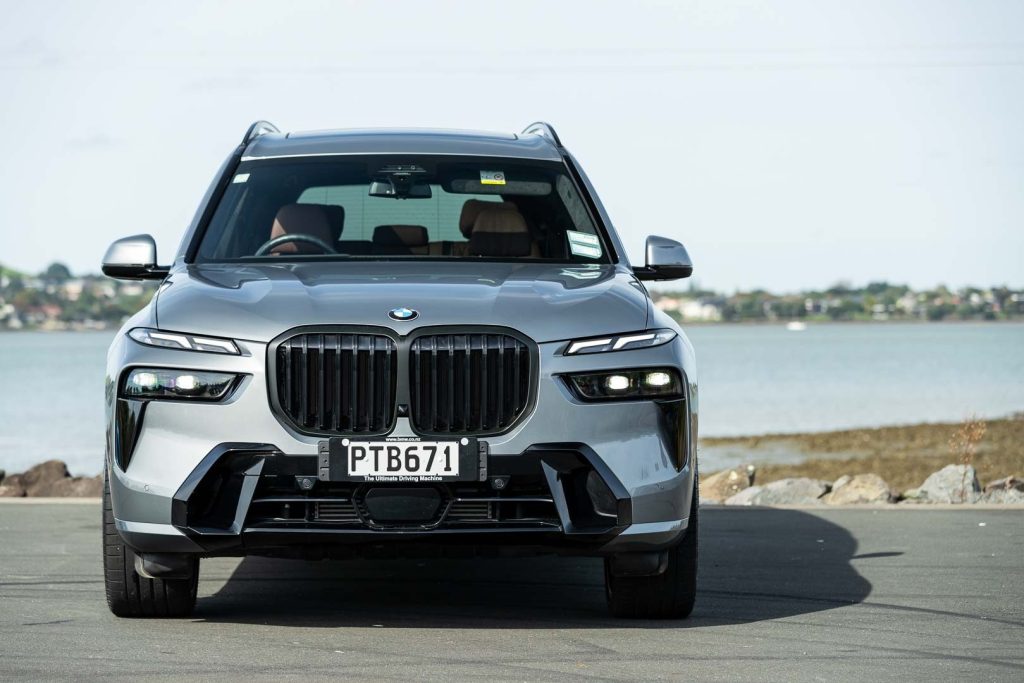
Never missing an opportunity to go large, the optional 23-inch alloys are the biggest ever offered by BMW.
In the cabin, you’ll find a new dashboard with spiffy ‘slimline’ air vents (look intriguing but the knob has a disappointing tactile character) while we could do without the light bar that reminds everyone they’re in an X7.
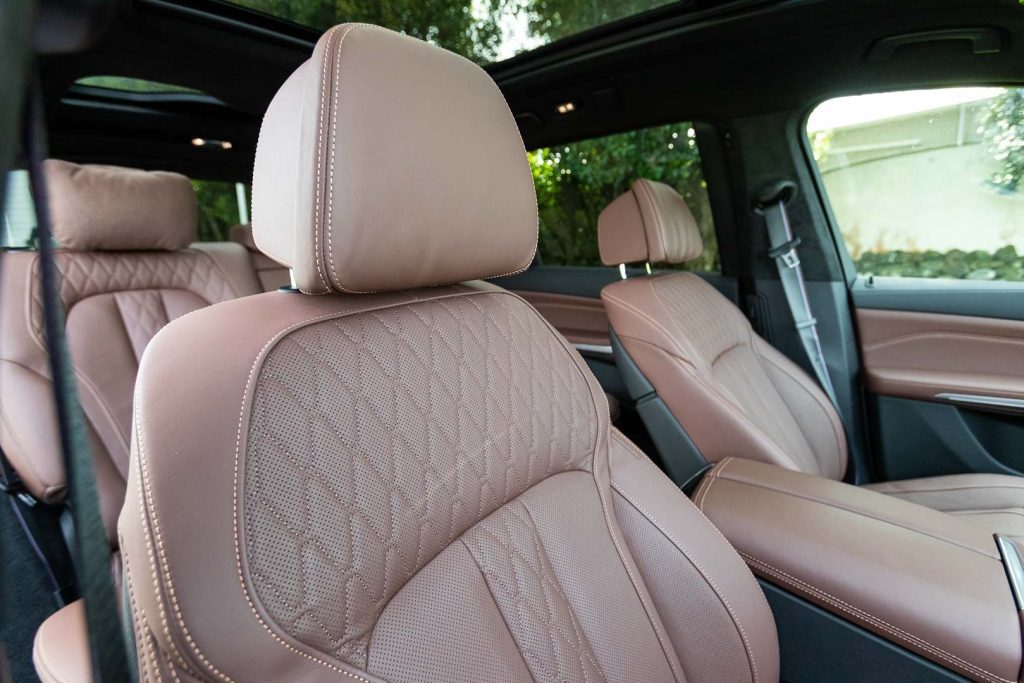
There’s extras of everything in here; five-zone climate control, a panoramic glass sunroof that incorporates the third row and a banging 20-speaker hi-fi system.
This has BMW’s comfort seat as standard with every-which-way adjustment to get super snuggly as it gives you a massage.
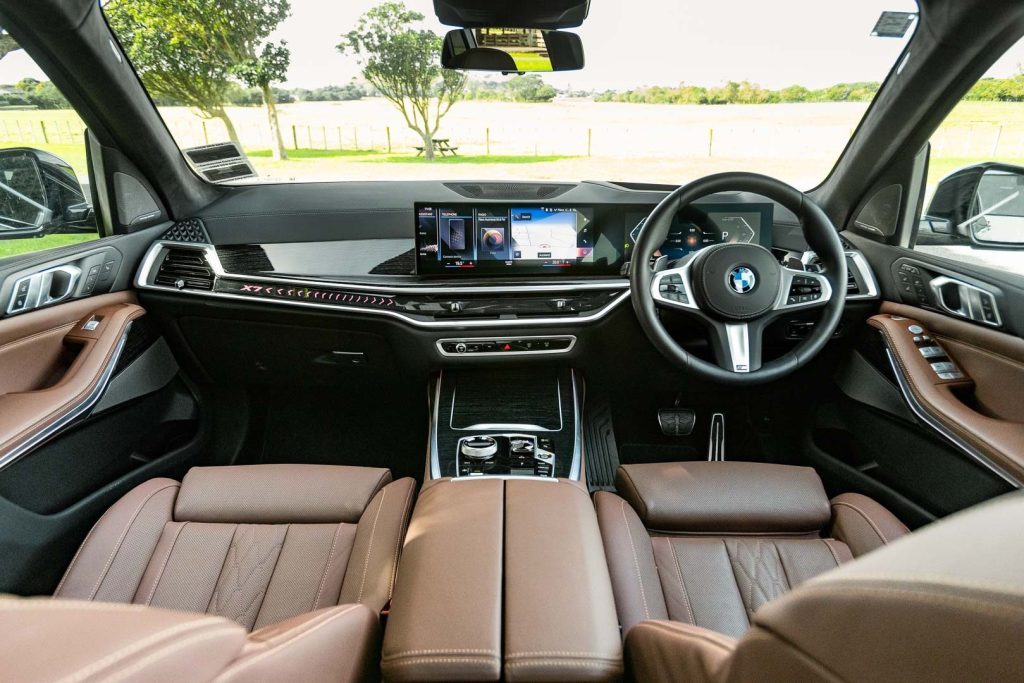
Other nice but unnecessary features (some optional) include cup holders that can help keep your drink cool or warm, everything is power operated and many surfaces are heated, including the armrests.
Compared with newer BM contraptions like the X1 and BMW iX, the cabin doesn’t feel as spacious with its big centre console hogging all the space.
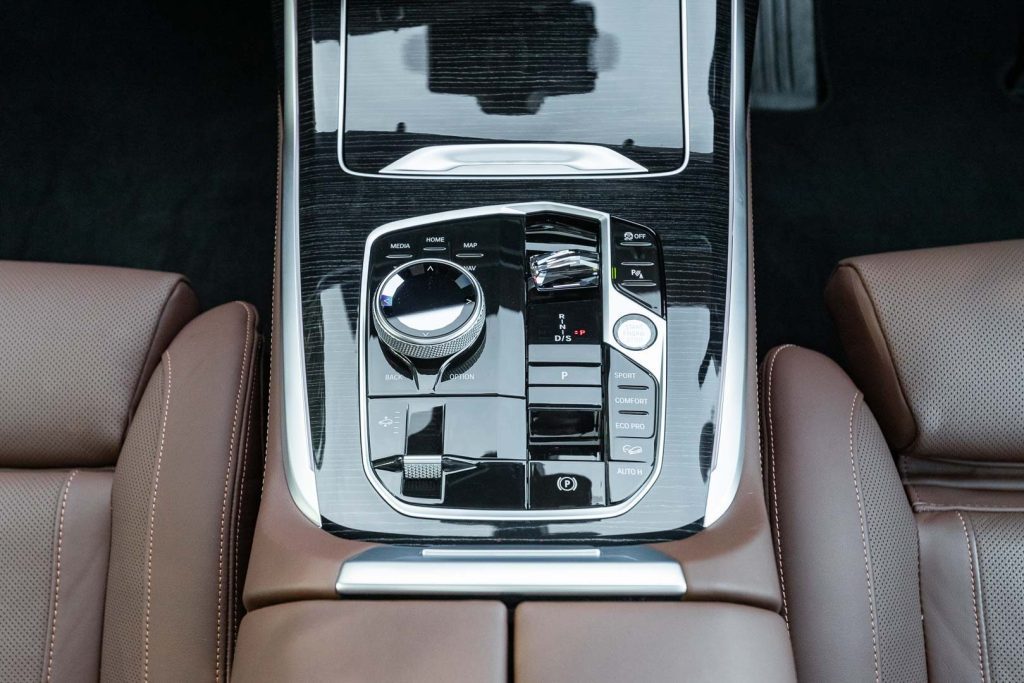
The X7 now has a duo of displays, the instrument panel configurable while the widescreen, hi-def entertainment system has its deep layered menus of guff bringing all sorts of information to your fingertips.
Or you can use the iDrive remote to navigate around, or the voice control (we won’t mention the silly gesture control). The oral commands are the way to go, and the digital assistant is more up to the minute with what she (or they?) can do.
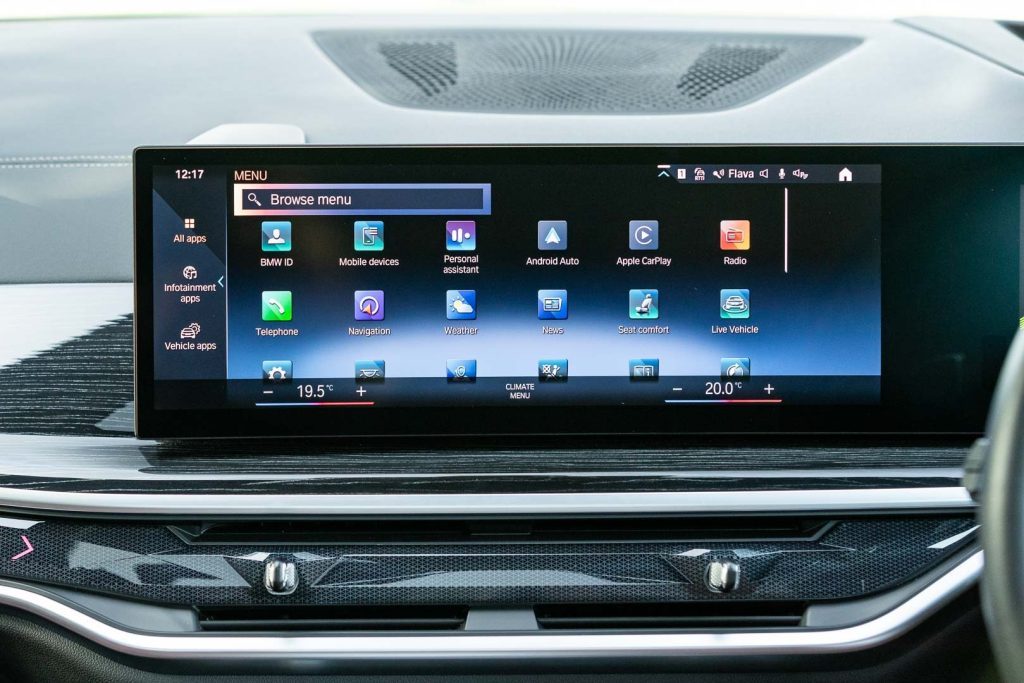
Most of the buttons on the dash have been banished, so you can either curse the fact you have to paw away at the touch screen to raise the temperature, thus distracting you from the road ahead, or just say ‘BMW, I’m cold’ and she/they will raise the temp for you.
She/they can also change up the drive modes, though if you still prefer to push buttons, there are a few of those clumped around the new miniaturised (and jewelled) gear selector.
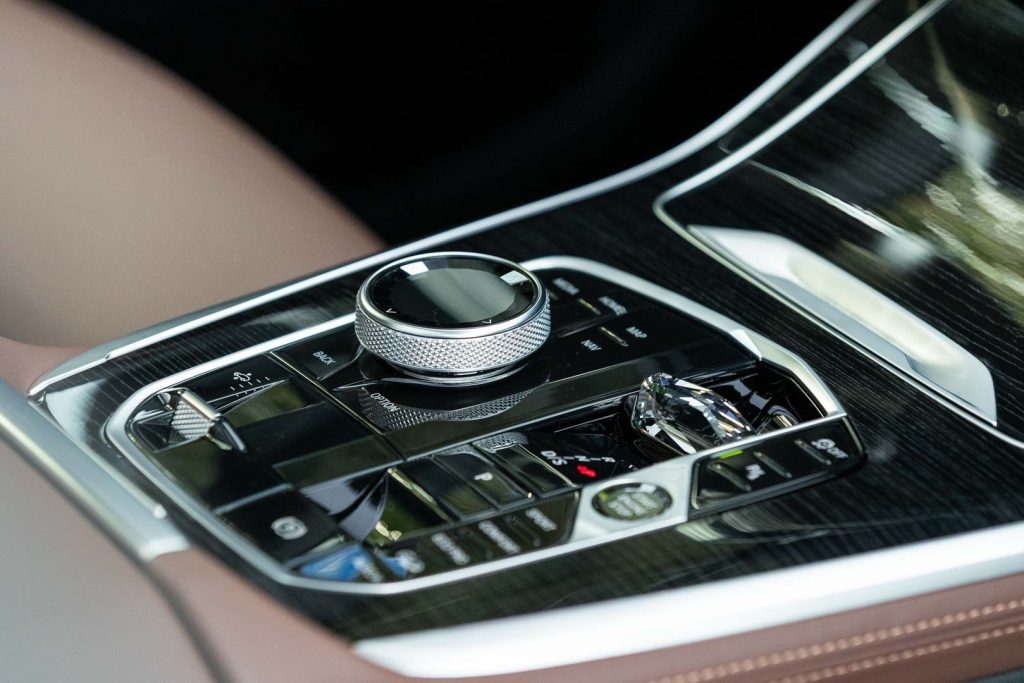
What are the interior features of the X7?
The best descriptor for the X7 is gigantic (5.2m long, 2m wide) but the size means it can offer commodious lodgings for up to seven people.
The rear doors are ginormous and facilitate easy entry, providing you’re not trying to load up in a tight spot.
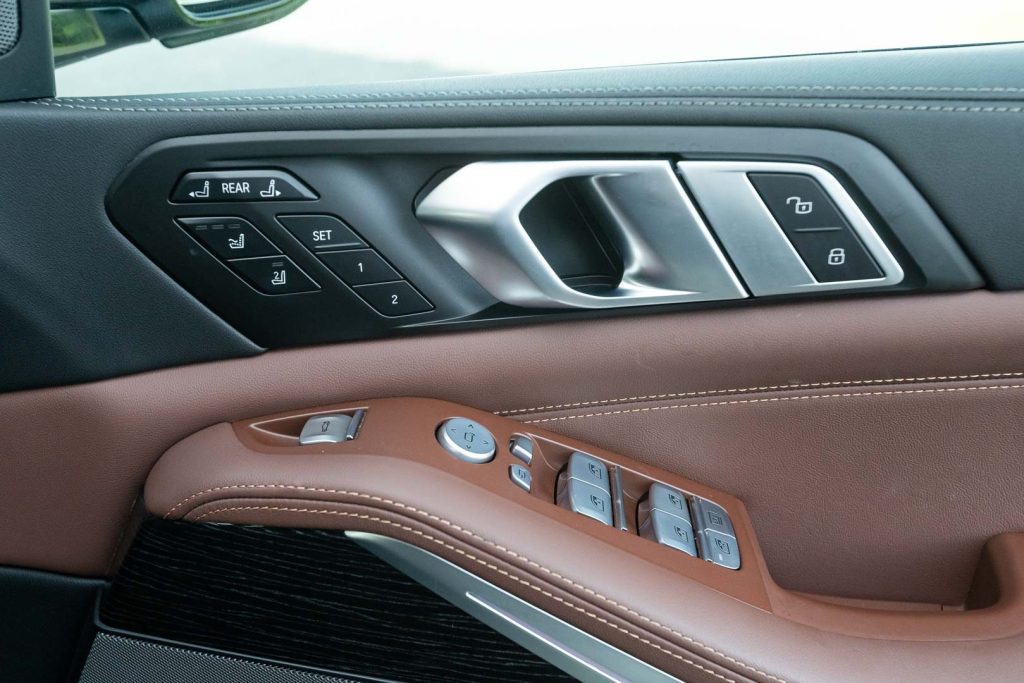
This is a beast in the parking lot, taking up every square centimetre of the space and requiring plenty of room to manoeuvre around.
Thank goodness it now has a few more of BMW’s driver assistance features, in particular the reverse helper, backing you out of tricky places by retracing its tracks (up to 200m now too).
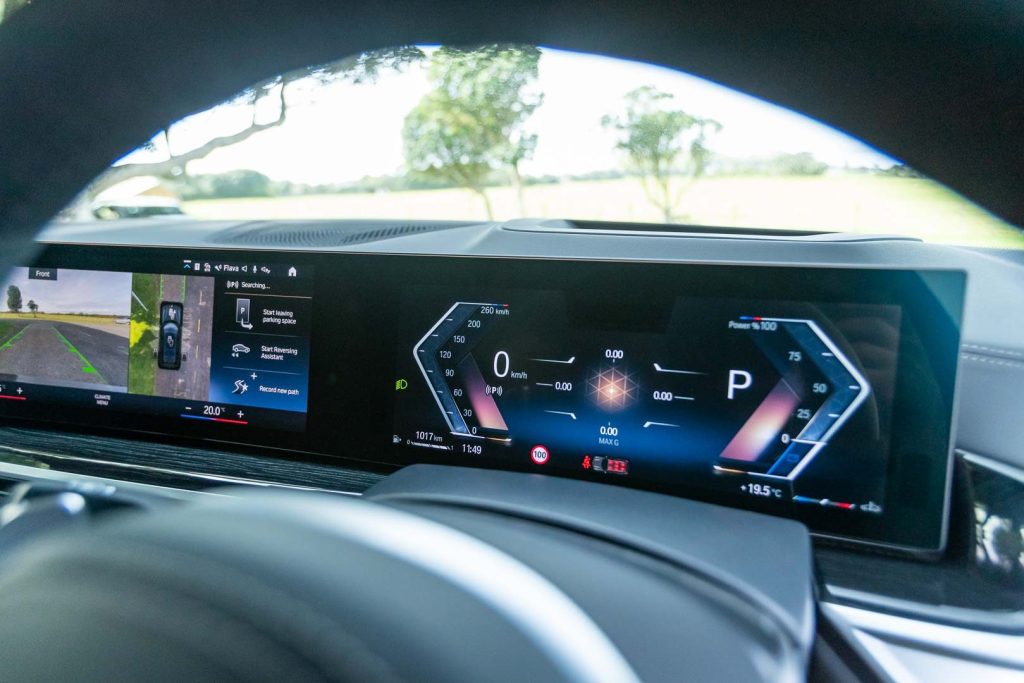
There are various parking magicians, including a brilliant surround view camera and auto braking if it thinks you are going to ram into something when reversing.
These are good additions because it seems that people who are terrible drivers, particularly when it comes to manoeuvring around slowly, tend to choose gigantic vehicles like the X7.
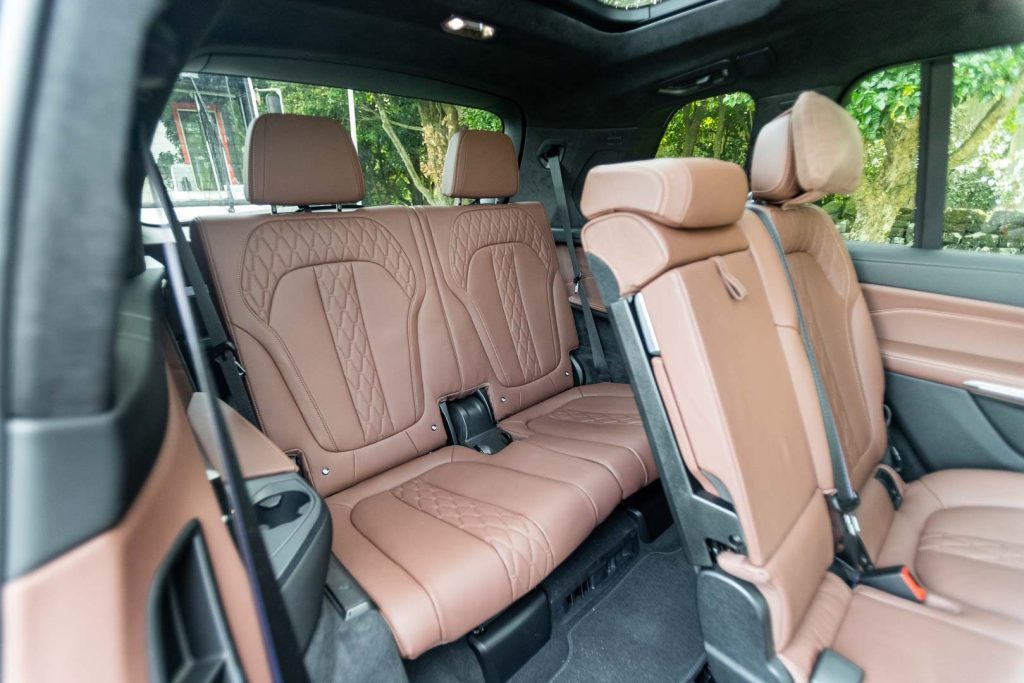
You don’t have to expend your energy to reconfigure the seats, they can be folded electrically, with buttons positioned strategically around the cabin.
They take their sweet time, but it’s a one-touch process. All you need is a little patience, which is not something you usually have when there are kids trying to scramble on board.
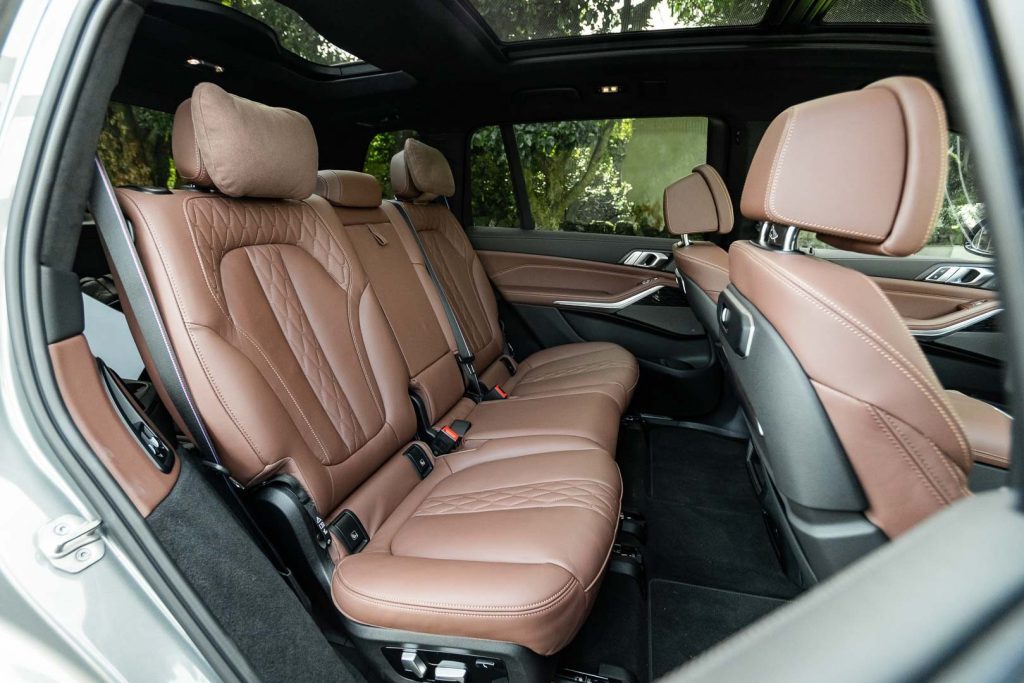
There’s room enough in the third row for adults to sit comfortably, rather than merely perch, while there’s some useful luggage space in behind the third row (300L).
In five-seater mode, the hold is huge, although BMW persists with its split tailgate (both sections powered) meaning that when the bottom section is lowered, it’s a stretch to retrieve things from the boot.
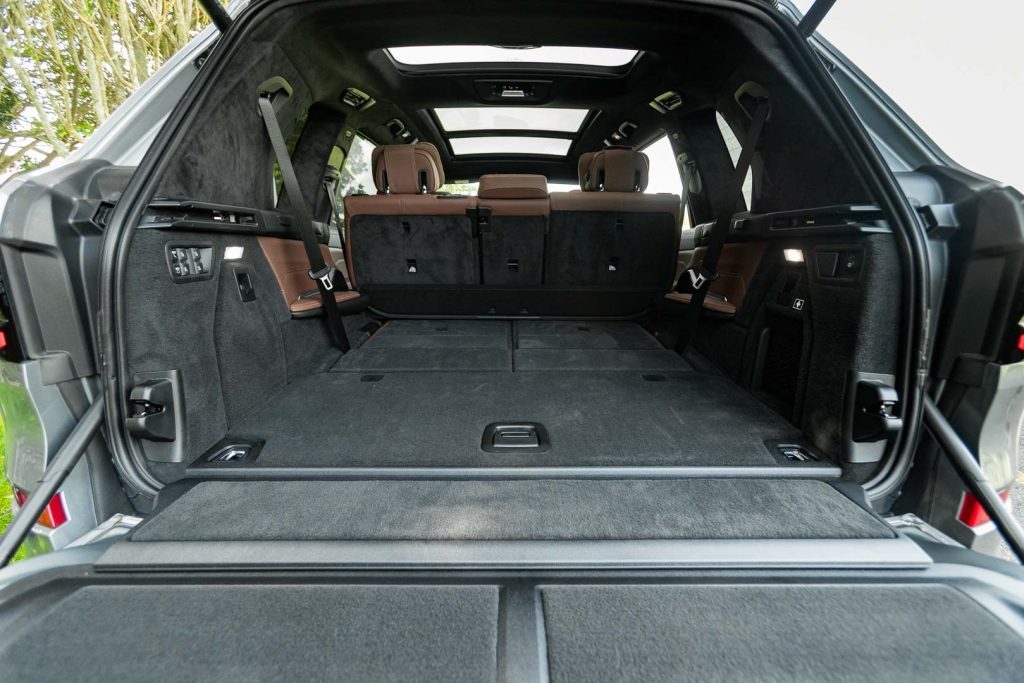
Is the BMW X7 good to drive?
It seems almost old fashioned to have a diesel under the hood, but it still does the job nicely.
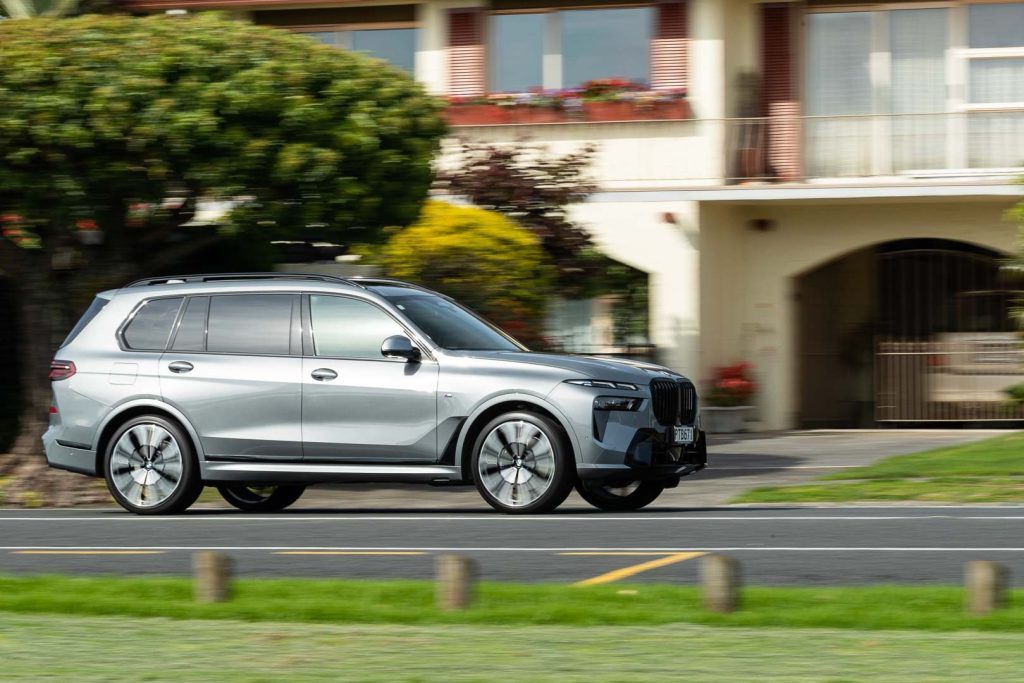
The 3.0-litre six has been revised (new steel pistons allow a higher combustion pressure, the injection system now rated at 2500bar and delivering up to 12 injections per cycle) while a 48v mild hybrid device has been added (a crankshaft-mounted starter generator which is integrated into the transmission, adding 9kW and 200Nm at certain speeds).
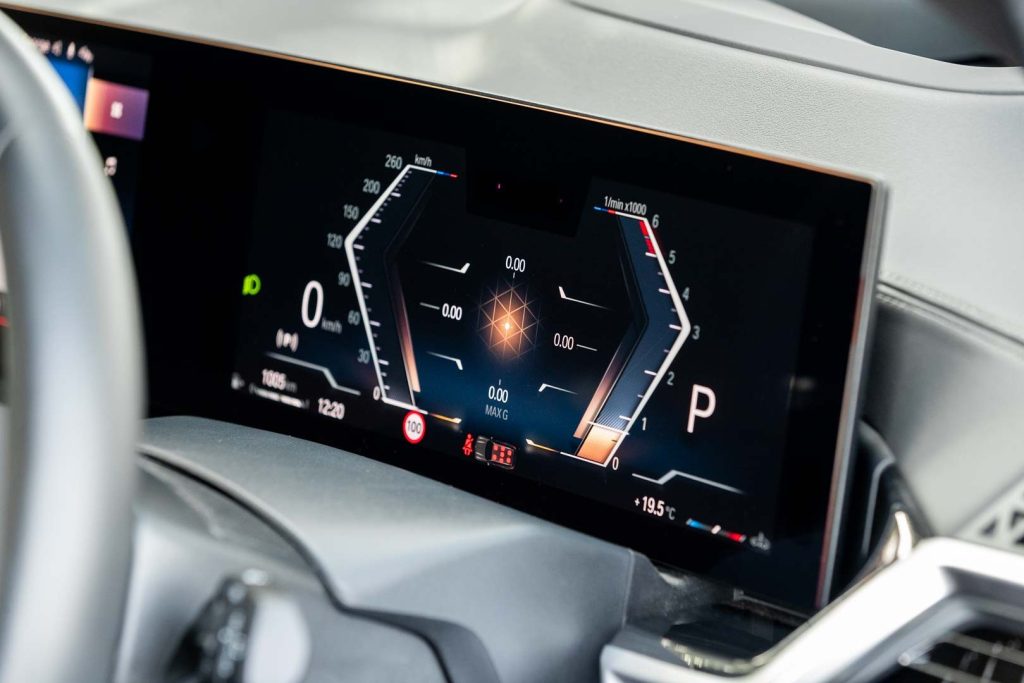
There’s a new eight-speed auto too. The figures are 259kW, 720Nm with a 0-100km/h time of 5.9sec.
Rightcar states consumption at 8.2L/100km (241g/km) while we averaged 11L/100km (coincidentally, the same as the trip computer’s indicated long term average over 1600km).
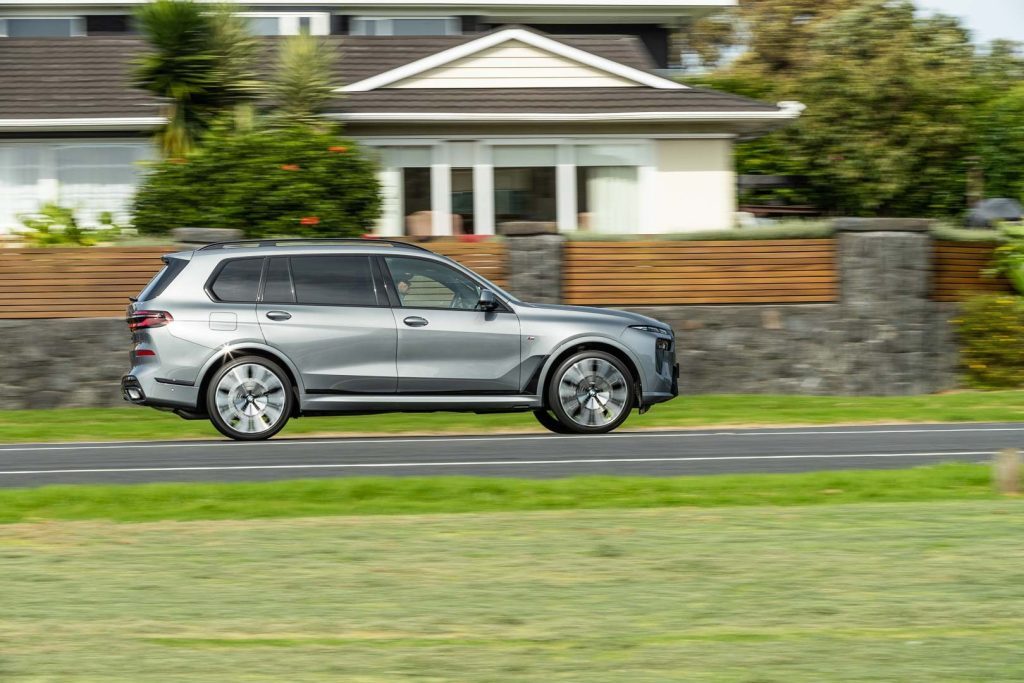
The big diesel is still a charmer with plenty of torque from the get-go, a refined and powerful growl, and it’ll rev happily to 5000rpm.
The 48v hybrid bits mean faster restarts from the idle-stop system so you’re rarely left waiting for the action to refire. The eight-speed auto shuffles the gears in a fine manner.
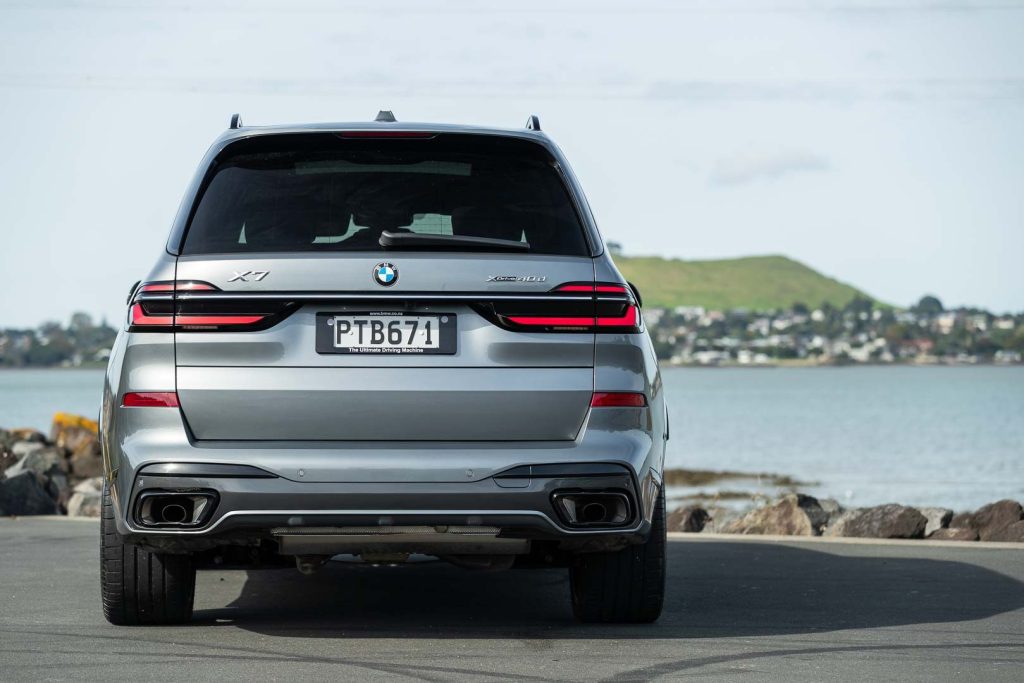
Variable air suspension comes as standard, and the ride is fairly well sorted, though those big 23s will still detect the bumps.
They look the part, but also appear rather vulnerable to curbing. Road noise is subdued, given how wide the rubber is.
Click the drive mode in Sport, and thanks to those tyres and a firming of the dampers, this big bus handles. And thats despite its titanic weight (2490kg).
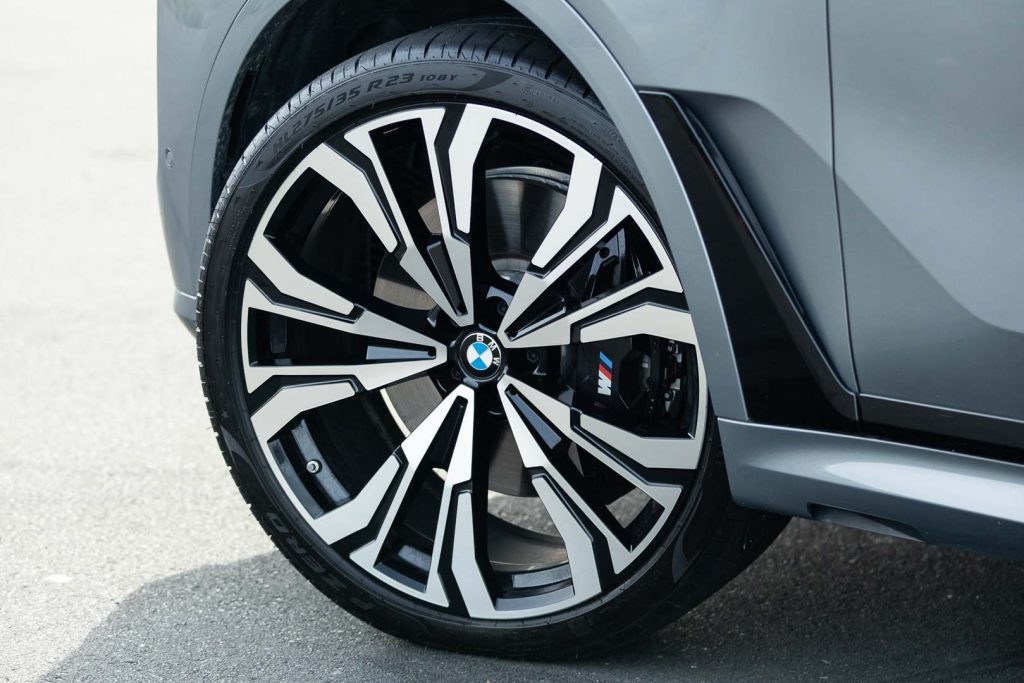
It steers accurately, the roll is contained and the electronic aids help keep the nose on line.
The lane keeping system is overly active, probably because the thing is so damn wide, so on the motorway it’s good to activate the assisted driving cruise control and let it maintain your place on the road.
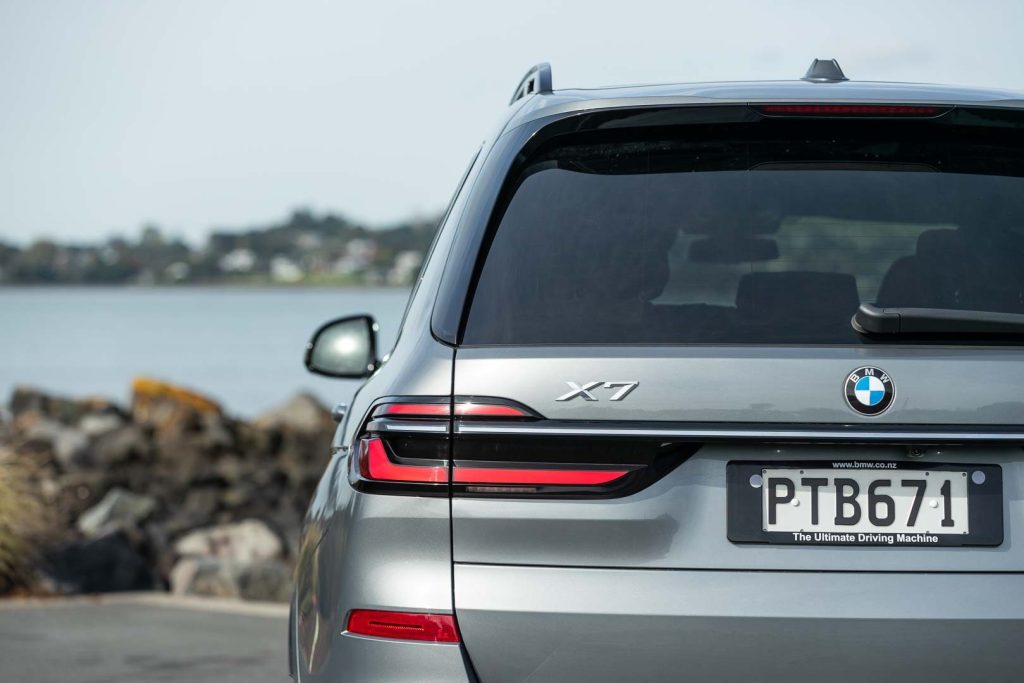
What is the price of the new X7 40d?
The base price is $181,400 plus $3162 in fees and on roads. And despite a comprehensive specification you can still tick up extras like the $10,000 Luxury Package to add those additional features like the massaging seats.
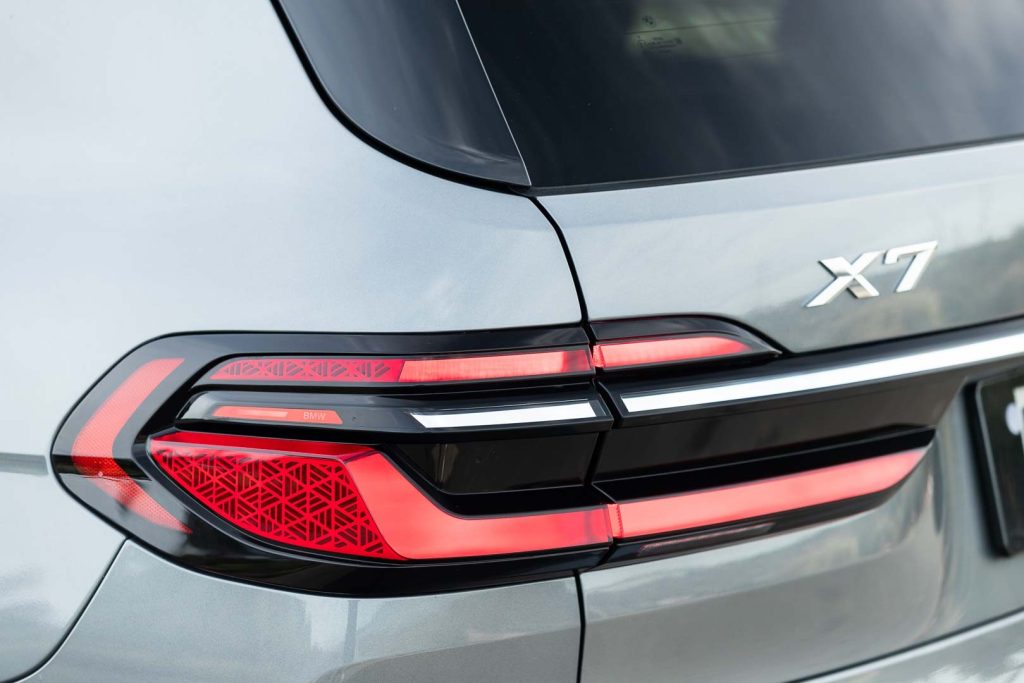
And so this tester was $193,500 as you see it here. But then the 7 Series starts at $220k, the i7 at $280k.
And given the X7 can ferry more people, go off road (figuratively speaking) and haul up to 3500kg, no wonder it’s BMW’s best seller in the luxury class.
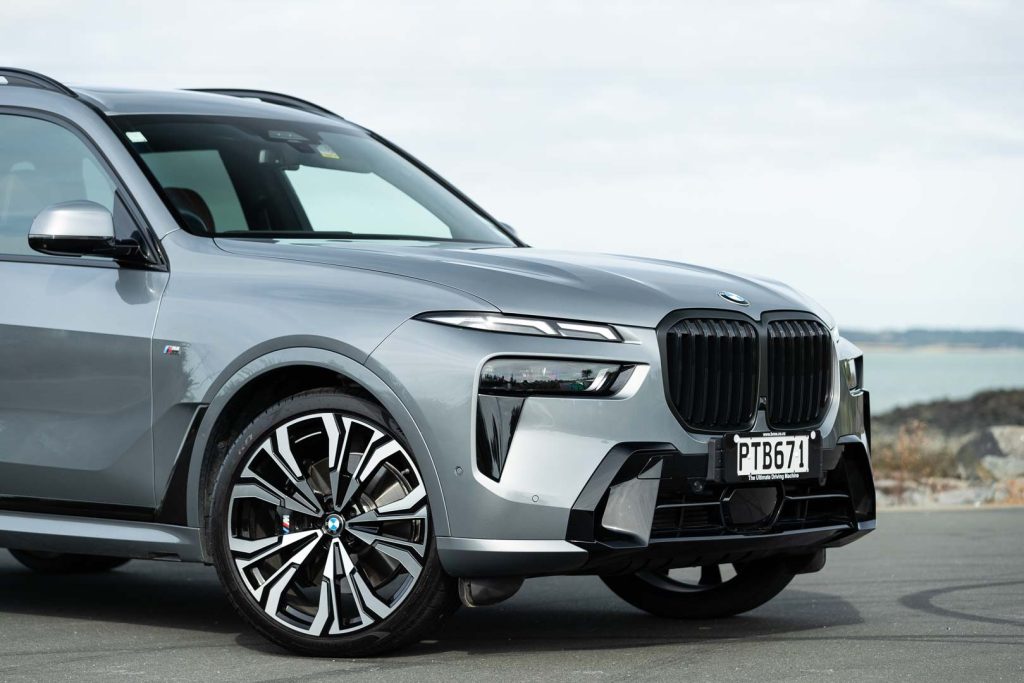
| Model | BMW X7 xDrive40D |
| Price | $181,400 |
| Clean Car Discount | Fee – $3,162 |
| Engine | 2993cc, IL6, T, DI |
| Power | 250kW@4400rpm |
| Torque | 700Nm@1750-2250rpm |
| Drivetrain | 8-speed auto / AWD |
| Fuel Use | 8.2L/100km |
| C02 Output | 241g/km |
| 0-100km/h | 5.9sec |
| Stability systems | ABS, ESP, TV |
| Safety | AEB, ACC, BSM, LDW, RCTA, ALK, AHB |
| Luggage Capacity | 326-750-2120L |
| Tow rating | 750kg (3500kg braked) |
| Service intervals | Variable |
| Scheduled servicing | 3 years/Unlimited km |
| Warranty | 5 years/100,000km |
| ANCAP rating | Not yet rated |
| Weight | 2490kg |


